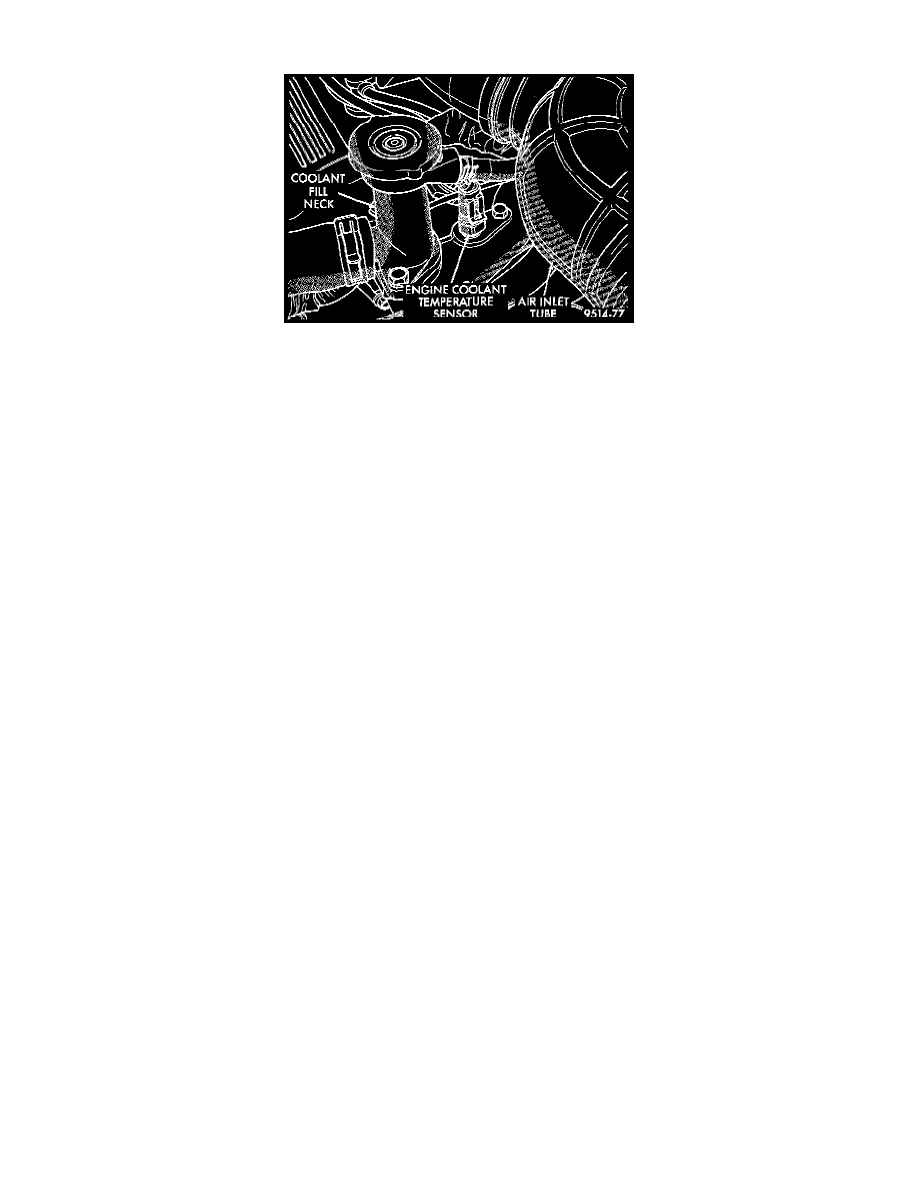Stratus V6-2.5L VIN H (1997)

Coolant Temperature Sensor/Switch (For Computer): Description and Operation
Fig. 7 Engine Coolant Temperature Sensor
OPERATION
The Engine Coolant Temperature (ECT) sensor is installed in the housing between the filler neck and thermostat Fig. 7. The sensor provides an
input voltage to the PCM.
The sensor is a variable resistance (thermistor) with a range of -40°F to 265°F.
-
As coolant temperature varies, the sensors resistance changes, resulting in a different input voltage to the PCM.
The PCM contains different spark advance schedules for cold and warm engine operation.
-
The schedules reduce engine emissions and improve driveability
-
Because spark advance changes at different engine operating temperatures during warm-up, all spark advance testing should be done with the
engine fully warmed.
The PCM demands slightly richer air-fuel mixtures and higher idle speeds until the engine reaches normal operating temperature.
The engine coolant sensor input is also used for radiator fan control.
CIRCUIT OPERATION
The engine coolant temperature sensor provides an input to the Powertrain Control Module (PCM) on circuit K2. This sensor input is also used
for the instrument cluster coolant temperature gauge.
From circuit K2, the engine coolant temperature sensor draws up to 5 volts from the PCM. The sensor is a variable resistor. As coolant
temperature changes the resistance in the sensor changes, causing a change in current draw. The K2 circuit connects to cavity 26 of the PCM
connector. The PCM provides a ground for the engine coolant temperature sensor signal (circuit K2) through circuit K4. Circuit K4 connects to
cavity 43 of the PCM.
